Two Effective Measures Which Enable You to Increase the Energy Efficiency of a Building Insulating profiles and spacers made from engineering plastics provide thermal separation that ensures energy efficient buildings in terms of windows, doors and façades. With high-rise buildings in particular, architects and planners are keen on using aluminium windows. Aluminium profiles have very high execution accuracy, they enable customized design possibilities and are extremely lightweight. In addition, aluminium as a material naturally has high chemical resistance and is mechanically resilient. The disadvantage of aluminium, however, is that it is very good at conducting heat. According to the standard DIN EN ISO 10077-2, aluminium has a thermal conductivity of ƛ = 160 W/mK. As a result, thermal separation of the aluminium profiles becomes necessary. How Does Thermal Separation Work? Heat is energy which by means of thermal conduction, convection and radiation, always flows in the direction of the lower...
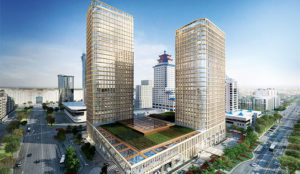
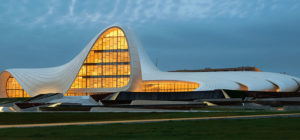
“We are Dedicated to Drive Innovation Throughout the Middle East”
In conversation with the team of Window & Façade Magazine, Khan shared the journey of Emirates Glass and what they are planning to achieve in the near future. Here are the excerpts… Please brief us on the history and objective behind the formation of Emirates Glass ? Emirates Glass was established in 1997 by Mr. Khalid Bin Kalban to become the leading provider of energy-efficient architectural glass in the Middle East. Since its inception the company has been an integral part of Dubai’s growth and evolution, having supplied glazing and expertise for many of the most iconic buildings across the city. However, Emirates Glass has also expanded its international presence and we are proud to have supplied our solutions to GCC countries such as Saudi Arabia, Oman and Kuwait, but also to Azerbaijan, Turkey, India, Sri Lanka, Pakistan, Bangladesh, East and South Africa and even Canada. Building an impressive project...
Posted on: 05 Sep 2019
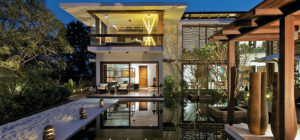
Sustainable & Sensible Approach Can Create Better Designs
Please tell us about your practice? I started my architectural practice in 1989, after graduating from CEPT University, Ahmedabad. The driving force behind the journey of over three decades has always been the openness to continuous learning, the quest for excellence and the sheer joy and pride in our work. As an architectural firm, we have grown exponentially by accepting every challenge that came its way. We not only provide technically sound advice, but cutting edge technology and engineering, trendy, modernistic architecture, interiors and landscape designs. I have poured in my passion, commitment, wholehearted enthusiasm, hope and my energy in all my work, maintaining a high level of integrity and commitment. [caption id="attachment_31711" align="alignnone" width="774"] The entire house is cladded with natural stone[/caption] At HPA, H stands for happiness, P for positivity and A for accountability. That tells our philosophy. We are a small team of 20 people based...
Posted on: 04 Jun 2019
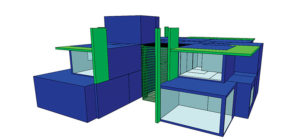
U & SHGC Values: Impact on Energy Consumption
India is the second most populated country in the world with nearly a fifth of the world's population. According to the 2017 revision of the World Population Prospects, the population stood at 1.339 billion. Infrastructure and industries tend to increase by meeting population demand and growth, which will considerably increase the energy demand. Therefore, it would be essential to reduce the energy per capita to meet the demand of the increased population. It’s also essential to reduce the carbon footprint and to preserve the environment. [caption id="attachment_31497" align="alignnone" width="774"] Graph summarising the dry-bulb and wet-bulb temperatures of Bengaluru[/caption] Substantial infrastructure has been developed across India to meet the demands of the growing population. Bengaluru is one of the best examples of development with an increase in population. In this article, we shall be going through how the selection of glazing can play a significant role in the reduction of thermal...
Posted on: 30 May 2019
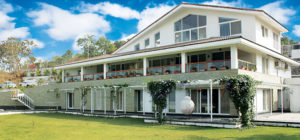
In Future, All Fenestrations Will Have A Minimum Carbon Foot Print
What is your view on façades of the future? Latest state-of-the-art fenestration is proven and durable. In future, all fenestration will have a minimum carbon foot print when processed and/or manufactured. The steps for the same are: use of renewable energy; minimum or no wastage of raw material resources; should have a similar life cycle as the whole building envelope; should be fully recyclable and contribute towards energy and CO2 reduction. In addition, they should be ergonomic in operation, especially for the ageing population; safe and secure to use; should offer for traditional or modern designs and should be cost effective. Complying with these desired attributes is a tall order for any of the known fenestration materials. Industry has not found the ‘perfect’ frame material yet that ticks all those boxes. Selection of the appropriate or most suitable fenestration solution in terms of frame material and glass will always depend...
Posted on: 28 Mar 2019
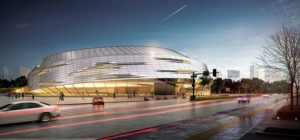
Facades of The Future: Materials & Technologies Revolutionising the New-Generation Façades
No doubt, façades are the most important building element from both the user's and the architect’s point of view. They are the most difficult to design too since the perception of iconic and technologically advanced facades is changing frequently. Designers are researching and experimenting with new and complex façade forms and patterns. The glass aluminium facades are bygones now as we see a lot more new materials in the market such as rusted iron panels, zinc, copper and steel, and even high-pressure laminates. Along with the materials that furnish the look and feel of a building, technologies applied to facades are also changing. Leading-edge technologies play a crucial role in terms of sustainability and operational cost-effectiveness. Truly successful facades do far more than merely project an iconic image, they play a vital role in driving or transforming building performance, engaging with the external environment, significantly enhancing durability, and reducing energy...
Posted on: 28 Mar 2019
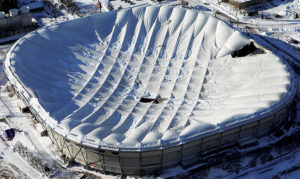
Façade Audit
Façade audit or forensics is an emerging specialised service that does a diagnosis of the façade design at a micro level. The purpose of this service is to identify the weak links in the façade design and implementation before a disaster can destroy the building envelope and endanger lives of occupants and also people near the building. Façade is a dynamic industry where there is continuous learning and innovation. Due to this dynamism, there is a fair amount of experimentation that happens at most project sites. Sometimes things do not work out due to the lack of past data or experience on the performance of the façade. Unlike concrete, where there are volumes and volumes of books and references, façade is a neglected field when it comes to documented knowledge and technical approach as virtually every building has a unique bespoke façade. The information and learning remain with the people...
Posted on: 27 Mar 2019
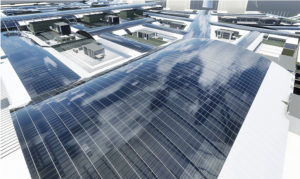
Innovations in Façade Design
A century ago, in 1918, the first generation of cars looked much like a wooden cart with an engine mounted onto it, steering wheels were just starting to replace the tiller, and 50km/h was considered breakneck speed. When compared to the latest Tesla or BMW electric sports cars, these early automobiles simply pale. Similarly, the Curtiss NC-1 biplane of 1918 had a maximum speed of 144km/h and a range of 2,500km, while the modern Lockheed Martin F-22 Raptor features a top speed of 2,500km/h in addition to a host of other high-end capabilities unimaginable back in 1918. Perhaps even more striking is the evolution of Information Technology. Only fifty years ago, a computer that was capable of performing only the most basic of tasks would have filled a very large room. Today, most of us have smart phones in our pocket that can perform the same tasks a billion times...
Posted on: 27 Mar 2019
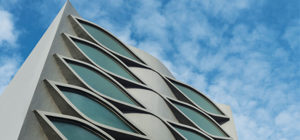
Creating a Sense of Fluidity – Cool Colours Bengaluru
A virtually consolidated built-up area of 2,355 square metre spread across four storeys, serves as an office space and storage for a clothing brand. The multi-level office sits in a tight urban setting in South Bengaluru. Underlining refined details that are unobtrusive, the design of the office space is intentionally minimalist, calm and functional, without any extraneous décor elements. The office space design intent has been to achieve a sense of fluidity in the architectural form that is suited to the client brief. Translation of a sculptural notion into a workable design and construction was a serious challenge that has been bested by the use of digital media and physical models as reference prototypes for execution on site. The effect of fluidity is achieved by articulating windows in a sculptural manner on the building façade. Litany of a sinuous pattern to morph the number of floors is abetted to distort...
Posted on: 27 Mar 2019
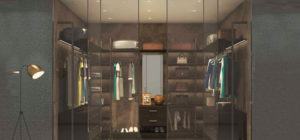
Smart from Ozone – Gliding Automatic Door System
Ozone, the leading player in Architectural Hardware Segment, introduces Smart Glide Automatic Sliding Door System under its flagship brand Ozomotion. The New Ozone Smart Glide System runs on magnetic linear motor technology which is a noiseless, safe and reliable operating mechanism. Unlike other automatic door operators that run on motor and belts, Ozone Smart Glide is a low-energy operator. The Door System comes with a remote control and push button, though other access control devices can be integrated with it like microwave sensor & handwave sensor. It is offered in two variants, Smart Glide 80 for door weight 30-80 Kgs and Smart Glide 150 for door weight 50-150 Kgs. Ozone Smart Glide’s compact and linear construction offers design flexibility to suit the user’s aesthetic and functional needs. It can be applied for single or double sliding door panels of wooden or glass finishes. With its slim linear size and alterable...
Posted on: 26 Mar 2019
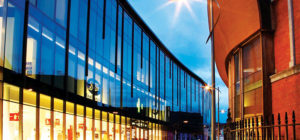
21st Century Software Solutions for Door, Window & Façade Industry
Software has changed the way we do business in the 21st century. These amazing programming tools can manage a range of business processes right from the inquiry stage to site installations. Fenestration companies in India can now benefit from the variety of software available to enhance their business. Fenestration industry software can be categorised into two types. To begin with, let’s talk about software that specifically focuses on designing and fabrication of doors, windows and façades; here the profile and the hardware database play a key role. Then we have ‘Enterprise Resource Planning software’ (also known as ERP systems) which can manage an array of your entire business. ERP systems bring all business processes and data to one platform. This not only increases efficiency but provides real-time visibility for your fenestration business. Design and Fabrication Software Design and fabrication software is equipped with databases of numerous well-known architectural profile system suppliers...
Posted on: 15 Feb 2019
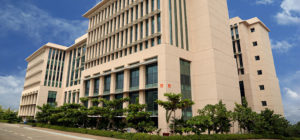
Adaptive, Sustainable Urban Façades
According to the United Nations, more than one half of world population now lives in urban areas. Urbanisation is increasing in all countries of the world. It is known that there is a clear link between urbanisation and environment. This is evident from the fact that cities have high demand for resources and have higher pollution levels compared to rural areas. So, it is important to ensure the new infrastructure, especially buildings are environmentally sustainable.Buildings account for one-third of global energy use, and significantly high carbon emissions. Considering the fact that a large fraction of buildings is going to be built in the coming years globally, it becomes imperative to follow sustainable building design strategies to minimise the environmental footprint. Buildings need to be designed in the right way from the concept stage to achieve high efficiency and minimal cost. Air conditioning accounts for nearly half of the energy consumption...
Posted on: 14 Feb 2019
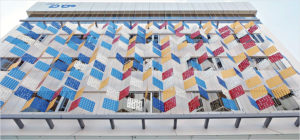
A Vivid Façade Swathed in a Riot of Colours
Aira is a boutique hotel with forty guest rooms spread over five floors located in the commercial heart of Vijayawada, Andhra Pradesh. With many concrete structures around, the hotel wasn’t getting the prominence it deserved. The client wanted the hotel to stand out visually. To address this issue, the designer, Shankar Narayan Architects, created a layer of colourful panels over the building façade. It was a visual element that would be memorable and longlasting. The Challenge: One major factor that the architect considered before starting the renovation was the harsh sunlight of Vijayawada. Some of the primary challenges in panel formation were: Ensuring free movement of air through the panels and at the same time allowing privacy in the road facing rooms. Providing shade to the hotel’s façade Creating a dynamic effect by allowing gentle movement of the panels and yet making sure the structure is strong. The Solution: Shankar...
Posted on: 12 Jan 2018
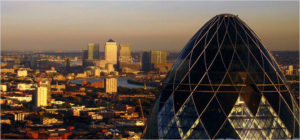
21st Century Façade Skins: Future-proofing Our Assets
Creative, innovative, imposing, and controversial. Capturing a moment in time and history, and serving as a statement of engineering progress and architectural design - today’s façades push boundaries, communicate brand image and use exciting, collaborative materials to produce provocative and advanced performance solutions. Day in and day out, across the globe, there seems to be a recurring theme in the care of our façades; a distinct lack of appreciation for our building skins. Whilst much of our work in the UK and Europe is driven by strict budgets and miles of red tape, the emergence of Super Skyscrapers in the Middle- and Far East means that the need for a façade care plan has never been more imperative. As long as a façade is still perceived as a commodity and not as a living, breathing skin within an urban space, there will be little in the way of positive action...
Posted on: 05 Oct 2017
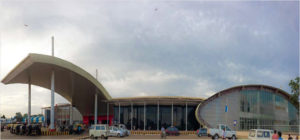
A Modern Public Facility New Railway Station Building, Hubli
HUBLI, officially known as HUBALLI, literally meaning “Flower creeper”, is located on NH4 connecting Mumbai to Bangalore. Hubli Railway enjoys the status of zonal headquarters of south western railway of Indian Railways. This railway junction is connected to Mumbai in North-West, Goa in West, Bangalore in the South, Hyderabad and Solapur in North. It meanders through the rich forests of Western Ghats, the mining belts of Bellary, Hospette, traverses through archaeologically important heritage sites of Bijapur, Hampi, Badami, Pattadkal, Mysore etc., carrying commercial produce, manganese ore, timber sheet etc. thus making it one of the busiest and important junction. New Station Building, Hubli Hubli, being strategically located geographically on the Deccan plateau, was a part of political upheavals from the Vijayanagar dynasty through Adilshahis, Mughals, Peshwas and finally the British. The first railway workshop was established in AD 1880 and a station was built in AD 1881. After a span...
Posted on: 04 Oct 2017
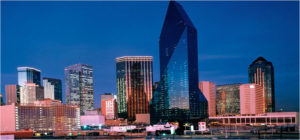
Our Silicone Technologies are Helping Shape the Indian Skyline
WFM: Tell us about your company, its products, and your business in India? Jean-Paul Hautekeer (JPH) : Dow Corning is a speciality chemical company, now a wholly owned subsidiary of The Dow Chemical Company, formed specifically to explore the potential of silicones, and their applications in various industries. We have more than 70 years of experience in the industry. Silicone is actually made from sand, which is transformed into poly crystal and silicon polymers, thereafter it is used in making different products. In the construction Industry, silicon is mainly used due to its durability and flexibility. Building components like glass on the facade are fixed using silicones due to these characters. Silicon will not deteriorate when exposed to sunshine, water, and any type of weather - hot or cold. Increasing urbanisation and rising need for energyefficient buildings (especially high-rises) are leading to growth in demand for silicone based materials. Applications containing...
Posted on: 03 Oct 2017

